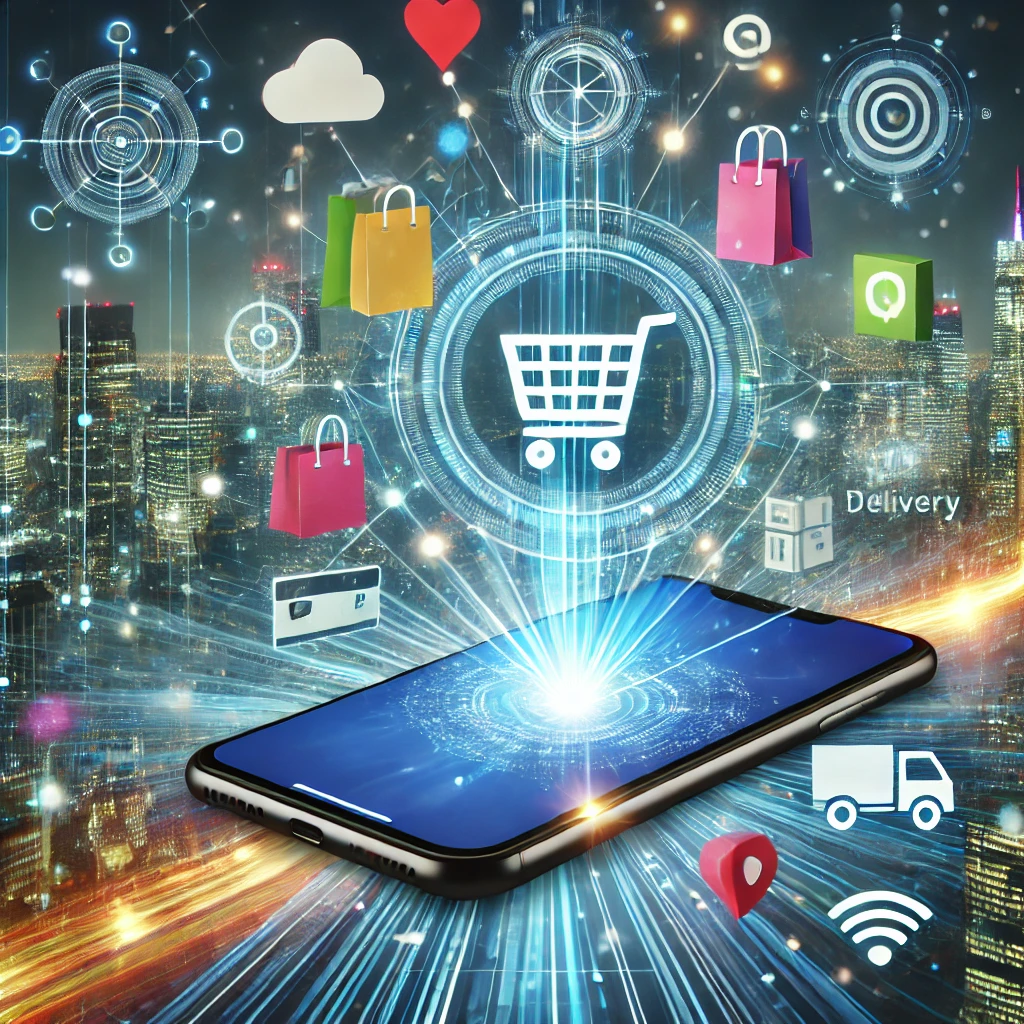Introduction
Smartphones have revolutionized the e-commerce industry by providing consumers with unprecedented convenience and accessibility. With the rise of mobile technology, shopping is no longer restricted to desktops or physical stores. Smartphones enable people to browse, compare, and purchase products anytime, anywhere, fostering a mobile-first economy. This transformation is shaping consumer behavior, business strategies, and the overall retail landscape.

Key Terms
1. Mobile Commerce (M-Commerce): E-commerce conducted through mobile devices like smartphones and tablets.
2. Mobile Apps: Applications designed to provide a streamlined shopping experience for users.
3. Mobile Payment Systems: Digital payment methods like Apple Pay, Google Pay, and mobile wallets.
4. Push Notifications: Alerts sent by e-commerce platforms to users, promoting offers or reminding them of abandoned carts.
5. Responsive Design: Websites designed to adapt seamlessly to different screen sizes, enhancing mobile usability.
Features of Smartphones in E-Commerce
1. 24/7 Accessibility: Smartphones allow consumers to shop anytime and anywhere.
2. Personalization: Apps use AI and algorithms to suggest products based on user preferences.
3. One-Touch Payments: Simplified payment processes with saved cards or digital wallets.
4. Push Notifications: Real-time updates about sales, discounts, or product availability.
5. Augmented Reality (AR): Virtual try-ons for clothing, furniture placement previews, etc.
6. Location-Based Services: Customized offers based on a user’s geographic location.
7. Social Media Integration: Direct shopping links through platforms like Instagram and Facebook.
Classification of E-Commerce via Smartphones
1. B2C (Business-to-Consumer): Direct sales from companies to individual consumers.
2. B2B (Business-to-Business): Transactions between businesses facilitated via mobile apps.
3. C2C (Consumer-to-Consumer): Peer-to-peer sales platforms like eBay and Facebook Marketplace.
4. C2B (Consumer-to-Business): Platforms where consumers offer services/products to businesses.
Problems Associated with Smartphone-Based E-Commerce
1. Security Risks: Mobile apps and payment systems are vulnerable to cyberattacks.
2. Poor User Experience: Non-optimized websites can frustrate mobile users.
3. Privacy Concerns: Data collection for personalization can lead to misuse.
4. Limited Internet Access: Not all regions have reliable mobile internet connectivity.
5. Over-Reliance on Technology: Businesses may lose customers during technical issues.
Solutions to Address These Problems
1. Enhanced Security Measures:Use encryption for payment systems and secure logins.
2. Responsive Design:Ensure websites are mobile-friendly for seamless user experiences.
3. Transparent Data Policies:Clearly inform users about how their data is collected and used.
4. Offline Capabilities:Provide features that work without internet access, like product catalogs.
5. Technical Support:Offer 24/7 customer service to resolve app or platform issues quickly.
Challenges in Smartphone-Driven E-Commerce
1. Adapting to Rapid Technological Changes: Businesses need to keep up with constant smartphone advancements.
2. Consumer Trust: Convincing customers of secure transactions remains a challenge.
3. Competition: The ease of entry into e-commerce leads to a highly competitive market.
4. Regulatory Compliance: Adhering to data protection and e-commerce laws globally
Conclusion
Smartphones have become the cornerstone of modern e-commerce, transforming how consumers and businesses interact. While they offer unparalleled convenience and innovation, challenges like security risks and technological adaptation remain. Businesses must invest in secure, user-friendly platforms and leverage mobile technology effectively to stay competitive. As smartphone penetration continues to grow, the future of e-commerce lies in embracing mobile-first strategies to meet evolving consumer expectations.

